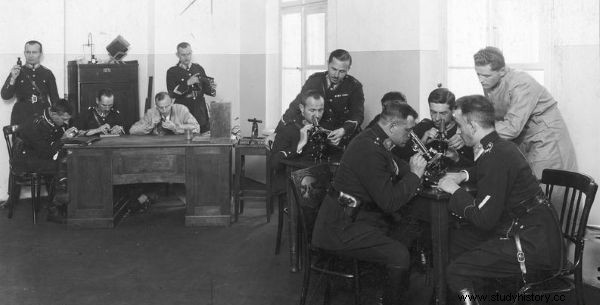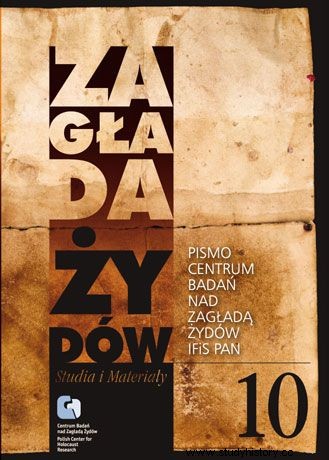The Jews hiding in occupied Warsaw trembled with fear not only of the German services, but also of the Polish officers. The historian Jan Grabowski sheds light on the role played by the Polish Criminal Police in the hunt for Jews. A service largely composed of pre-war crime hunters.
In the Second Polish Republic, apart from the ordinary uniformed police, there was a special unit called the Investigative Service, dealing with the prosecution of criminal and political crimes. The most talented and experienced policemen were selected to work there. In total, it had less than 3,000 elite officers and had an extensive network of informants.
The link of terror
Immediately after the September campaign, in October 1939, the Germans decided to subordinate the Investigation Service to their own Kriminalpolizei (Kripo), i.e. the Criminal Police. In this way, the Polish Criminal Police (Polnische Kriminalpolizei, PPK) was established. A number of Germans were included as directors and commanders, and over time also local Volksdeutsche.

Pre-war policemen of the Investigation Service. Photograph of the "Illustrated Daily Kuryer".
So far, the subject of PPK has been almost absent in Polish historiography. This gap is filled in by prof. Jan Grabowski. As he writes:
Theoretically (...), the PPK was supposed to focus on fighting common crime. In fact, the Polish Kripo became one of the key links in the Nazi apparatus of terror, and in the following years of occupation an important area of its activities was the fight against Jewish shipwrecked people, who managed to avoid deportation to extermination camps (...).
At the end of the summer of 1943, a special investigative unit was created within the PPK , whose task was to catch hiding Jews . There were a dozen Polish investigators (often volunteers), a few Germans, a few Volksdeutsche and two Ukrainians. This team was euphemistically called Kriegsfahndungkommando, that is, the Military Research Unit. It was headed by Untersturmführer SS Werner Balhause. Similar units were created throughout occupied Europe, incl. in France and the Netherlands.

The material is based on a scientific article published in the periodical "Zagłada Żydów".
Pursuing the Jews
Work in the branch consisted primarily of cooperation with a network of informers who delivered reports about hiding Jews. The latter were then arrested and taken to the Criminal Police Directorate, and later handed over to the Gestapo. The officers of the branch took, inter alia, participation in the arrest of the famous chronicler of the Warsaw ghetto Emanuel Ringelblum. As Jan Grabowski writes:
According to one of the undercover policemen (who in his testimony after the war obviously tried to diminish the scale of the repression): "arrests of Jews were carried out frequently, on average once or twice per week ” . (...) The residual source base does not allow us to define, even approximately, the scale of anti-Jewish activities of the Warsaw Kripo.
Unfortunately, it is also impossible to say how often the members of the PPK acted on their own initiative, and not only on the German command. We do not know how many of them were involved in blackmail and, on the other hand, how many collaborated with the Polish underground.
What were their motives? We can certainly mention fear and obedience to orders, but the sources also very often indicate the desire to get rich. Although the Germans kept the most valuable items left by the captured Jews, some of their property was assigned to Polish officers.
The source of the above news is:
Jan Grabowski, Tracking down Emanuel Ringelblum. Participation of the Polish Kriminalpolizei in the "Final Solution of the Jewish Question" , "Extermination of the Jews. Studies and Materials ”, vol. 10 (2014), pp. 25-56.
Historical news. What's the matter?
 | The "historical news" column is the latest news from the world of history. We are looking for missed and concealed discoveries of Polish (and not only) scientists. We show that there is always something going on in research on the past. |
 | Our news is short and accessible. On 2-3 thousand signs, we will summarize for you the discoveries that scientists have made on dozens of pages of hermetic works. We only write about what really matters. No boring. |
 | We rely on scientific publications from the last 18 months . In the world of history, news spreads slowly, and academic works reach potential recipients with a long delay. What in other fields ceases to be news after 24 hours in history, it may even be a year later. |
 | When preparing news, we follow the list of the most prestigious historical periodicals. If you are a publisher or author and would like us to reach for a specific publication - please send it to our editorial office. |
